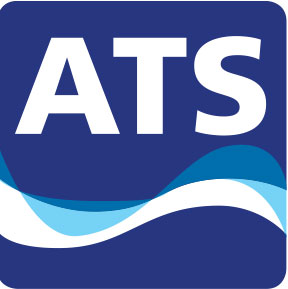Is a Serious Drinking Water Violation About To Hit Your Municipality?
In August 2015, the city of Baltimore sent out a press release detailing an EPA violation for higher than maximum allowable levels of haloacetic acids (HAA5) above the maximum allowable limit in the water system. The violation—61 parts per billion, while the maximum allowed value is 60 parts per billion—affected 1,500 customers. The city advised consumers to seek medical advice about drinking city water if they had severely compromised immune systems, or were pregnant, elderly, or had infants in the home. Otherwise, the city said, consumers should keep using the water.
Baltimore’s violation came about three years after the EPA changed the way it required water systems to sample for haloacetic acids in water. Until 2012, water systems determined maximum contaminant levels from an average of samples from the entire system. Now water systems must calculate maximum levels based on annual averages for each sampling location. Plus, the sampling locations are where the systems had the highest HAA5 levels.
EPA Action to Protect Drinking Water
HAA5, created when water is disinfected, can be dangerous in large amounts. But so is dirty drinking water. The EPA and water systems have had to balance the need to reduce disinfection byproducts, like HAA5, with the need to provide clean drinking water. They’ve worked to educate consumers on DBPs, performed testing, and set rules to reduce dangerous compounds in drinking water.
Cancer Risk is Linked to Haloacetic Acids
When water treatment plants use chlorine and/or chloramine to disinfect water containing organic and inorganic material, they create five haloacetic acids as byproducts:dichloroacetic acid, trichloroacetic acid, monochloroacetic acid, bromoacetic acid, and dibromoacetic acid. These five byproducts, along with another group of DBPs called trihalomethanes, can be dangerous for water drinkers.
Haloacetic acids in water are dangerous because some people who drink water with high levels of HAA5s over time may have a higher risk of cancer. They may also cause reproductive problems. This, the EPA has set maximum allowable limits for HAA5s in drinking water, in order to limit exposure. The EPA approved new limits and testing procedures in the early 2000s and again in 2012 and 2013 to limit health risks.
Science Makes Complex Water Problems into Simple Solutions
Limiting HAA5s in water isn’t so easy. Water systems need to disinfect water to make it safe to drink. In the past, we had typhoid and cholera floating around in our drinking water. And organic and inorganic matter is present in water, especially if it comes from rivers and lakes. So the answer is either filtering out organic and inorganic matter before chlorination, using an alternative to chlorination, or finding a way to remove and/or reduce DBPs and their precursors.
In 2009, water systems in Las Vegas, Connecticut, and Phoenix collaborated on a pilot project to remove DBPs, including HAA5s in water. They tested “how well simple treatment processes might perform in the distribution system for removing TTHM and HAA5.” They found that biologically active carbon was effective at removing HAA5s. And granular activated carbon was effective at short-term removal of both classes of DBPs.
Get Faucet Smart
The EPA and water systems regularly distribute information to consumers, if they know where to look. When a water system violates an EPA rule, it must send a notice to all water users. And every year, each water system must compile a report for their customers called the Consumer Confidence Report. It must be ready to read by July 1 each year. Some systems have their reports online or on the EPA’s website. In other cases, consumers need to request a copy.
Also, water systems managers aren’t the only ones in control of water quality. Consumers who are concerned about drinking water with any DBPs can use granulated, activated carbon filters. Studies have shown that even the filters made for in-home use are effective at lowering HAA5s and THMs in water.
Haloacetic acids are an unfortunate—but dangerous—byproduct of water disinfection. Though there are risks to disinfection, allowing dirty water into homes in the U.S. would cause more harm. With new limits and testing measures, consumer information, and in-home filters, U.S. consumers can feel confident that their water is safe.



